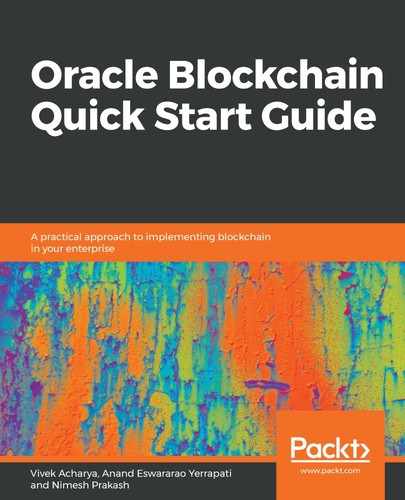An applicant's unique digital identity is generated based on government issue identifiers and biometrics. Biometrics adds the highest level of assurance, which is backed by a government ID. This will serve as a unique digital identity of the customer on the blockchain network. This helps the applicant turned customer to perform cross border transactions. Also, with a blockchain KYC solution, there is no central intermediary, and so each bank and financial institution doesn't need to duplicate the effort of performing the KYC checks. A shared immutable distributed ledger will offer to request a bank or financial institution, along with the applicant's permission, for the customer's activities across banks and institutes. It will also raise an alert if there is anything suspicious, which will let banks and institutes flag that customer. For all subsequent transactions that are performed by the customer, their digital identity will be appended with each transaction, which means that each transaction has the customer's digital signature with the highest level of assurance. A customer's digital identity can help you access the customer's relevant information, such as their address, and let you track and trace any transaction. This will also help you flag any suspicious transaction and helps reduce false positivity. With blockchain, there is no central intermediary. Therefore, there's no single point of failure and the immutable shared ledger turns out to be the source of truth.
 KYC/on–boarding processes on blockchain
by Nimesh Prakash, Anand Eswararao Yerrapati, Vivek Acharya
Oracle Blockchain Quick Start Guide
KYC/on–boarding processes on blockchain
by Nimesh Prakash, Anand Eswararao Yerrapati, Vivek Acharya
Oracle Blockchain Quick Start Guide
- Title Page
- Copyright and Credits
- Dedication
- About Packt
- Foreword
- Contributors
- Preface
- Exploring Blockchain and BaaS
- Accounting system – single and double–entry
- Centralized versus distributed ledgers
- DLT and blockchain
- Accounting system – triple–entry or distributed double–entry
- Blockchain definition and analogy
- Layered structure of the blockchain architecture
- Structure of the blockchain
- Types of blockchain networks
- Blockchain platform
- Blockchain actors
- BaaS 
- Summary
- Construing Distributed Ledger Tech and Blockchain
- Challenges and opportunities of DLT
- Challenges of traditional technologies and solutions
- Design strategy
- Blockchain properties and use cases
- Types of use cases
- Exploring use cases
- Engaging with a use case
- Summary
- Delving into Hyperledger Fabric
- A glance at the Hyperledger project
- HLF – features and qualifiers
- Architecture – conceptual view
- Hyperledger architecture (layered view) and components
- Large object storage – on-chain or off-chain
- Summary
- Engage in Business Case on Blockchain Platform
- Understanding the business scenario
- Designing the solution
- Exploring OBP
- Features and components of OBP
- Rich history database with OBP
- Summary
- Managing Solutions on Oracle Blockchain Platform
- Developing Solutions on Oracle Blockchain Platform
- Other Books You May Enjoy
KYC/on–boarding processes on blockchain
-
No Comment
..................Content has been hidden....................
You can't read the all page of ebook, please click here login for view all page.